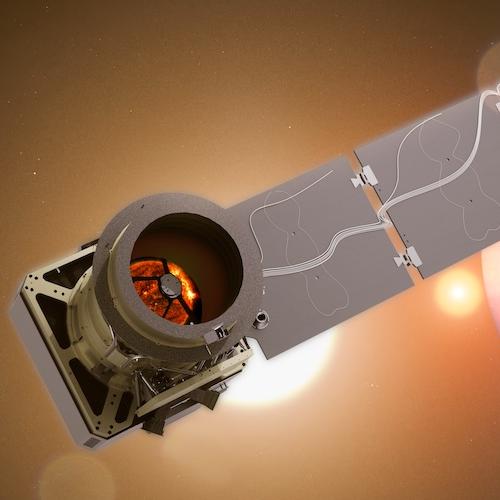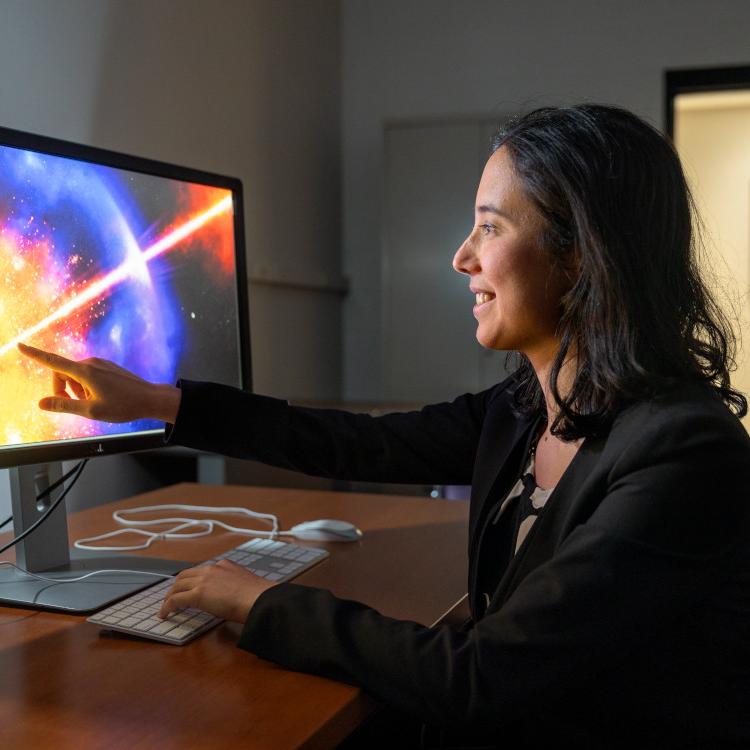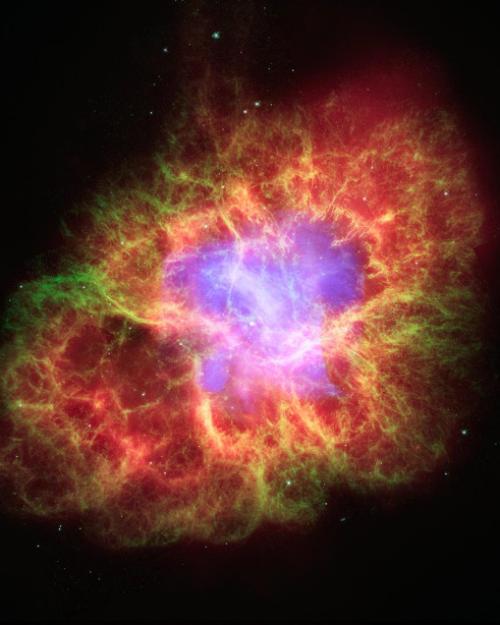NASA has approved a new mission to survey ultraviolet light across the entire sky, which will enable scientists to probe ever more deeply into how galaxies and stars evolve.
The space telescope, called UVEX (UltraViolet EXplorer), is targeted to launch in 2030 as NASA’s next Astrophysics Medium-Class Explorer mission. Anna Y. Q. Ho, assistant professor of astronomy in the College of Arts and Sciences, and Shrinivas R. Kulkarni, visiting professor of astronomy (A&S), are part of the mission team.
As a co-investigator, Ho’s entire research group will participate in the mission. They will be helping to develop and execute the UVEX science.
“Ultraviolet data will enable major progress on many of the science questions my group is interested in,” Ho said. “I’m particularly excited about the prospect of getting UV spectroscopy of cosmic explosions in their infancy, which will teach us what stars do in the final stages of their lives.”
Participation in UVEX is the latest chapter of Cornell astronomy’s involvement in pioneering space telescopes, which included the Spitzer infrared telescope as well as the James Webb Space Telescope. According to Ho, UVEX fills an observational need that previous telescopes haven’t been able to meet, because the type of astrophysical information provided by ultraviolet radiation can’t be accessed in any other band of the electromagnetic spectrum.
In addition to conducting a highly sensitive all-sky survey, UVEX will be able to quickly point toward sources of ultraviolet light in the universe. This will enable it to capture the explosions that follow bursts of gravitational waves caused by merging neutron stars. The telescope also will carry an ultraviolet spectrograph to study stellar explosions and massive stars.
“NASA’s UVEX will help us better understand the nature of both nearby and distant galaxies, as well as follow up on dynamic events in our changing universe,” said Nicola Fox, associate administrator, Science Mission Directorate at NASA Headquarters in Washington. “This mission will bring key capabilities in near-and far-ultraviolet light to our fleet of space telescopes, delivering a wealth of survey data that will open new avenues in exploring the secrets of the cosmos.”
The UVEX telescope’s ultraviolet survey will complement data from other missions conducting wide surveys in this decade, including the Euclid mission led by ESA (European Space Agency) with NASA contributions, and NASA’s Nancy Grace Roman Space Telescope, set to launch by May 2027. Together, these missions will help create a modern, multi-wavelength map of our universe.
NASA selected the UVEX Medium-Class Explorer concept to continue into development after detailed review of two Medium-Class Explorer and two Mission of Opportunity concept proposals by a panel of scientists and engineers, and after evaluation based on NASA’s current astrophysics portfolio coupled with available resources. The UVEX mission was selected for a two-year mission and will cost approximately $300 million, not including launch costs.
The mission’s principal investigator is Fiona Harrison at the California Institute of Technology. Besides Cornell, other institutions involved in the mission include University of California, Berkeley; Northrop Grumman and Space Dynamics Laboratory.
Linda Glaser is news and media relations manager for the College of Arts and Sciences.






